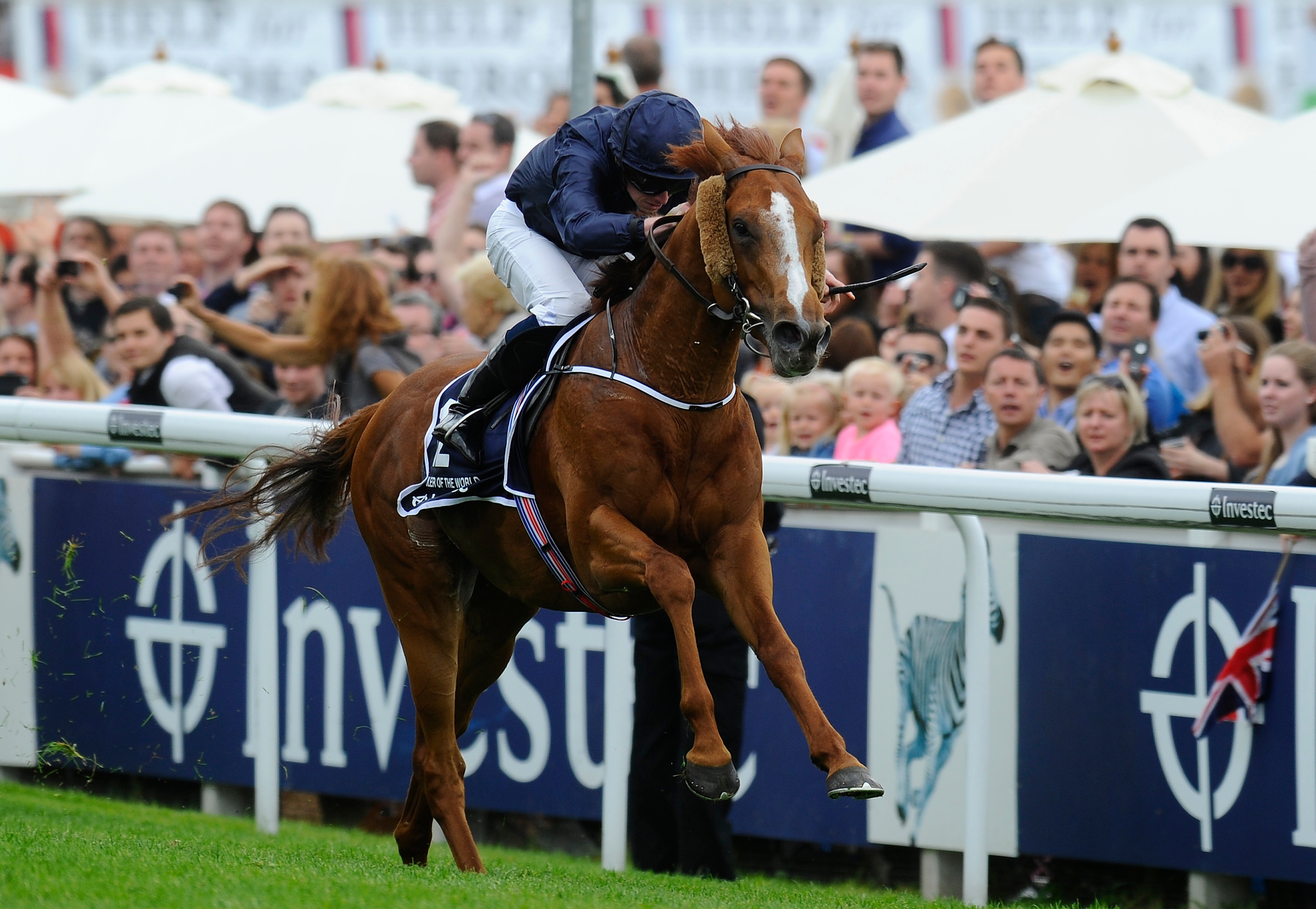After Ruler Of The World had won the 234th Derby, the owners, the Coolmore team, were asked if it hadn’t been something of a hostage to fortune giving the horse such a name. Drily John Magnier replied, ‘Not really. There have been plenty of bad American presidents.’ Given the struggle between the two top racing empires of Coolmore and Sheikh Mohammed’s Godolphin, it did however look like a case of ‘anything you can do…’ Back in 1998 Sheikh Mohammed was so impressed with the two-year-old Yaazer that he renamed the horse Dubai Millennium and in 2000 Dubai Millennium duly won the World Cup for Godolphin. Now Ruler Of The World has won the race everybody wants to win.
Coolmore currently does rule the racing world and not just because of the steroids scandal that has temporarily clouded Godolphin’s reputation. Standing on the winner’s rostrum at Epsom in their dark morning suits, John Magnier, Michael Tabor and Derrick Smith looked like three wise old crows who have collected not just the early worm but a whole lawn-full too. This was the team’s third successive Derby victory. The first, third and fourth horses were sired by its star stallion Galileo and the second by his son New Approach. In five years, 12 of the 20 horses who have come home in the first four in the Derby have been owned by Coolmore, all but one of them trained by Aidan O’Brien.
Coolmore chose to leave Magician, another potential Derby entrant, at home in Ireland, but with O’Brien there it still had its magician at Epsom. I watched him through the finishing touches before he sent out the last of his Derby entrants from the parade ring on Saturday. First he squatted down to tighten the girth. Then, painstakingly item by item, he checked the remainder of the tack, testing the tension on the reins. Meticulously he brushed down the horse’s quarters, sponged the top of his rump and down the side of his neck. Then again he squatted and extended each foreleg. No other trainer at this point was concentrating on such details. Aidan O’Brien seemed in another world. All his movements were slow, gentle but definite: for the horse it was the hands-on reassurance of routine.
Did he know that the horse they didn’t even run at two would turn out to be the best of his Derby entrants? I doubt it. Aidan tells the Coolmore bosses he has four or five nice horses and he decides when they are ready. They are not tested too rigorously against each other at Ballydoyle. Says Michael Tabor, ‘If you try and find out everything at home you are not going to win the Derby. We bring them here if they deserve to be here.’
So never mind if the Coolmore Mafia dominate. The dream they dream is of winning the Derby. Not the ‘Epsom Derby’, note. There is no such thing. All the others, the Kentucky Derby, for example, need the geographic prefix. They are imitations, quite good ones in some cases, but imitations. The Epsom race is The Derby. What is good for British racing is that Coolmore, owning and breeding the best horses, sees it that way, too, and wants to bring its potential stars to Epsom for their ultimate test. As Aidan O’Brien put it: ‘The whole thoroughbred breed hinges on the Derby. It’s what racing is about for everyone working in stables and on studs.’
This year, of course, marked the centenary of the notorious 1913 Derby when the suffragette Emily Davison was killed after running in front of the King’s horse Anmer and the favourite Craganour, who finished first, but was disqualified and the race awarded to the 100–1 Aboyeur. Author Michael Tanner has now comprehensively answered some of the questions that have raged ever since. In The Suffragette Derby (Robson Press, £20), an impeccably researched interweaving of real-life racing thriller with social history, he makes clear that there was no way Emily Davison could have successfully targeted the King’s horse. Nor was it a deliberate suicide — she had later engagements booked.
He also establishes beyond all reasonable doubt that Craganour’s disqualification was unfair and that the horse and his rider, Johnny Reiff, were more sinned against than sinning. Aboyeur’s rider never objected to Craganour — it was the stewards who instigated the inquiry and the senior steward was one Eustace Loder, who hated Craganour’s owner Bower Ismay. He loathed him because Bower Ismay was a ‘new money’ racing man, who had acquired Craganour, a horse Loder had bred, and because Ismay had sacked Loder’s jockey protégé. He resented him, too, because Ismay had had an affair with Loder’s sister-in-law and possibly also because Ismay’s brother was the president of the company that had owned the Titanic and had himself escaped in a lifeboat. With the aid of biased evidence from British jockeys united against the American Reiff, Loder was able to engineer a result that was clearly unjust not only to Reiff and to Ismay but also to the favourite’s backers. And in those forelock-tugging days he didn’t have to offer a word of public justification. Today’s cameras protect us against officials too.







Comments